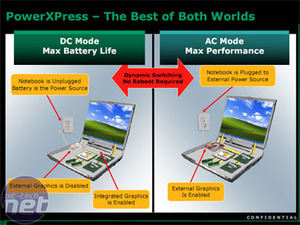Brand Overload
One thing that has become apparent over the last few years is the fact that we're now sold brands instead of actual hardware. Enthusiasts are conditioned to want the next Republic of Gamers, Quantum Force, MAX, Fatal1ty, Atomic, Spider or even Alpha-Dog (!!!111ONE) edition board. And that’s regardless of the board’s actual merits because all the special features are thrown together just for this one range.But do you really use all those features? Without a doubt, some are always worth having, but ignore the marketing buzz words and sniff out reviews that either test the features out or explain the technology – what can it actually do for you.
Case in point here is with the motherboard chipset – have we hit a feature wall? The latest Nvidia nForce 700i-series chipset is virtually identical to its 600i-series; the latest AMD 7-series chipsets still launched with the SB600 south bridge that wasn't really cutting it in the first place, and finally Intel's new X48 ‘enthusiast’ chipset is the X38 but the "3" stamp has just been changed for a "4" – of course, it’s safe to assume that there’s some speed-binning going on, but it’s not as if X38 doesn’t overclock particularly well anyway.

How many extra cards does the Fatal1ty brand actually sell and does it sound any better?
Furthermore, as good as Intel's P35 was, it is just a small evolution from P965 and P45 will likely be much the same again – a little faster, a little bigger. Of course, we've seen things like Intel TurboMemory that are genuinely different, but often these features don’t appear in a timely fashion and, in the case of TurboMemory, it won't reach desktops until this year… perhaps. With that said though, the price of DDR2 memory is so cheap at the moment and you have to question if TurboMemory is even worth an investment (when it does arrive) because you can buy 4GB of DDR2-800 for the price of a loaf of bread and pint of milk.
Then again, I recently had my spirit reinvigorated when I sat down with Nvidia to discuss its Hybrid SLI technology: for once we have something that's gone against the trend of "MORE POWER AND BIGGER NUMBERS" by actually providing some genuine power and noise savings to make a high-end gaming PC sensible again. And we've also seen the same concept from AMD as well and, as a matter of fact, AMD might be the first to market with a hybrid solution.
Sadly though, both of these are tied into platforms – while this makes everything work together, we might end up with a keyboard and mouse games console, rather than the pick 'n mix lifestyle we've been so used to for so long. This is something that has been coming for a long time, and a great example of this is SLI – it’s locked to Nvidia chipsets, which inherently limits consumer choice. In the future, with the advent of hybrid technology, it’s going to be harder to upgrade to a potentially superior product from the competitor unless you go in for a complete system overhaul. This leaves people rooted to one manufacturer or they have to get to grips with the hassle and cost of an entire upgrade. Think for a minute about how often you buy a new notebook…
This is exactly what companies want though – ultimate control over the consumers’ purchasing habits, rather than rely on consumer choice for the best product combination and costly R&D to get ahead of the competition. It will make purchasing new equipment much easier for a bigger market though, and instead of bureaucratic BS between companies to get new standards sorted and new features working right – if only one company is working on it the turnaround should be quicker.
For us enthusiasts though, this just hammers nails through our hearts.

MSI MPG Velox 100R Chassis Review
October 14 2021 | 15:04











Want to comment? Please log in.